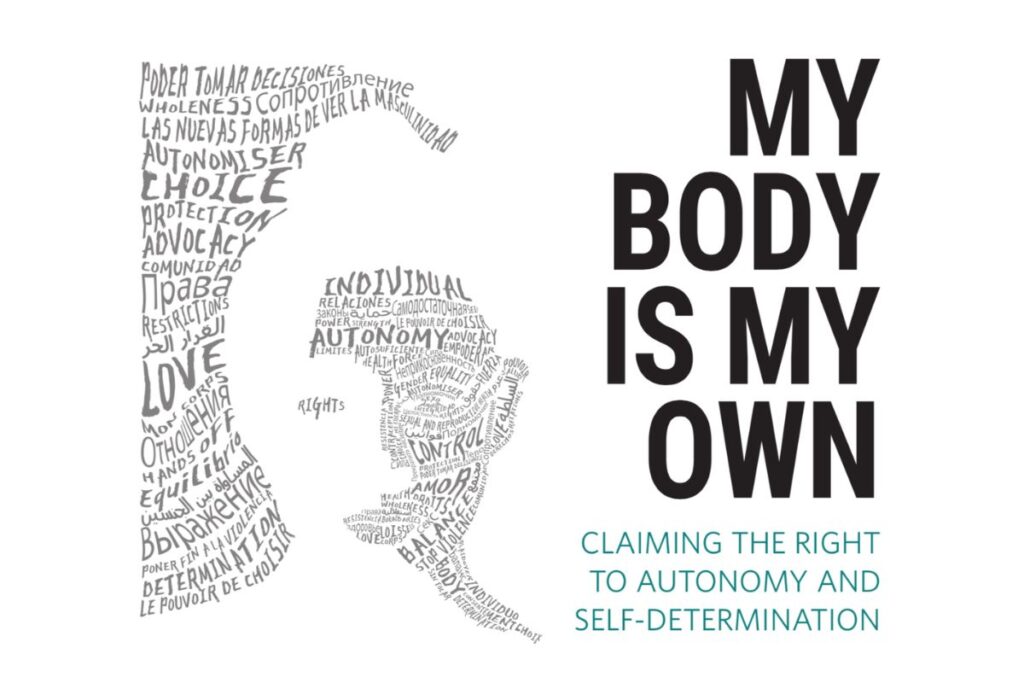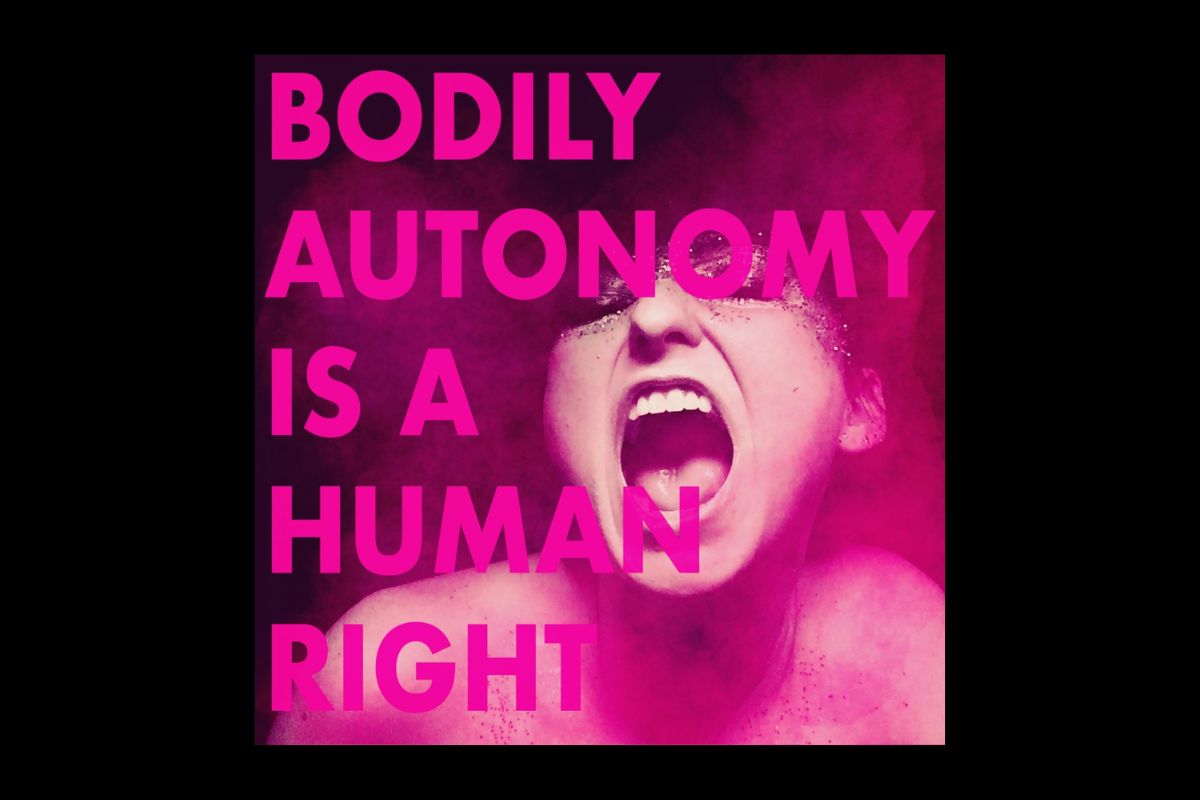Contents
Defining Bodily Autonomy
Bodily autonomy is a hot topic now perhaps more than ever before. It seems that many of us are still immersed in a culture that encourages us to be as quiet as possible. However, it is not clear what bodily autonomy entails. And what can we do to counter the systems that promote such negative views of our bodies?
First, let’s define terms using only the most basic language. The right to control one’s own body is known as bodily autonomy. For women, nonbinary persons, and trans people, in particular, this involves choosing one’s own body. It’s also a license to occupy a spot on the globe.
Sadly, people, governments, and entire institutions routinely undermine people’s right to bodily autonomy (even in 2022). Patriotic legal frameworks are still used to control and oppress women and minorities. Forces from without persist in laying claim to how women’s bodies exist in the world, particularly women of color and LGBTQIA+ individuals.
One definition of bodily autonomy is the privilege of deciding how one’s own body is governed.
What then shall we do? To begin, we can learn more about the laws that injure bodies around the world, organize protests, and cast ballots. (These groups make a terrific introduction.)
We can struggle against our own deeply formed views. Many of us have internalized harmful messages about our bodies and carried the resulting shame around for far too long. Caring for and valuing our bodies is an act of autonomy, as is challenging harmful narratives. We can shut up the people who believe our lives only have meaning if we fit into a certain mold or if our bodies exist solely to meet the needs of others. Individuals of us in positions of privilege can also use our voices to affirm and empower those whose bodies are more vulnerable to violence.
We can exercise autonomy by rejecting the idea that our physical selves are exclusive of value within a particular context or for the benefit of others.
Working together, we can make a world where everyone is treated fairly and has full control over their own body. Some starting points are provided below.
I’m a 47 yr old Métis mom and gma. I’m a sexual assault survivor, post secondary educated, a fed gov employee. I’m a firm believer in bodily autonomy. My family has white, Métis, black, and Japanese members. According to Trudeau I’m a racist with unacceptable views #TrudeauMustGo pic.twitter.com/TNsxEXaTNw
— BrownEyedGoddess (@BrownEyedGodde7) September 22, 2022
The Period Narrative
Embarrassment over menstruation is a worldwide issue. There’s the kind of a shame that’s on your face, as when menstruation people aren’t permitted to sit together, go to school, or even touch food. And then there’s the subtler form of shame that many Westerners face; the kind that leads to hiding tampons under sleeves and referring to the menstrual cycle with euphemisms like “Aunt Flo.”
The stigma associated with menstruation persists in many cultures.
Women and girls who menstruate are socialized to believe that their periods signify the beginning of adulthood and that entering this special club is equivalent to receiving a special honor. It’s problematic to assume that all cis women experience menstruation. Further intricacy is added to the discussion when engaging with the agender and trans communities.
What does it say about women in general if we continue to regard periods as a problem despite the widespread belief that menstruation equals womanhood? What about those who don’t identify as women but get periods?
Menstruation is viewed as a problem that needs to be fixed, as evidenced by the abundance of items available to manage, hide, and end the menstrual cycle. Then, what do we know now about the worth of our physical selves?
Menstruation is treated as if it were a problem to be remedied by the abundance of items available to regulate, hide, and end the menstrual cycle.
The upbeat news is that we can take back control of this story. Instead of letting our periods, or lack thereof, define our femininity or gender, we should be proud of our bodies no matter what. We can reduce the stigma associated with menstruation by referring to it by its correct name. We can stop calling each other derogatory names and using euphemisms to avoid discussing private bodily functions.
Fourth, keep in mind that the menstrual cycle is not constant for all women. Menopausal women and trans women also stop having periods. Let’s try to avoid making sweeping historical assumptions. This will aid in normalizing discussions about irregular cycles and fighting against discrimination.
5. Give money to local and international groups fighting period stigma. THINX, Cora, and Clue are good places to begin.
The Health & Beauty Narratives
The Western world and Eurocentric stories have mistakenly taught us that tall, slim people are the standard of beauty. Girls are taught early on that they should conform to societal norms that call for smaller-than-average females since ladies are frail. Brands in the beauty industry constantly bombard us with messages that tell us our bodies are flawed if we don’t have perfect hair and skin. To make up for it, we believe the brands when they say we need to buy more products or cut calories from our diet.
However, we can stop buying into these stories today. To begin, the patriarchy’s drive to mold and control female appearance resulted in the creation of the beautiful and skinny woman concept. It further emphasizes the dichotomy by excluding bodies that don’t fit into either gender norm. There is still a long way to go until the health, wellness, and beauty sectors are truly representative of all people and all bodies.
“The idea of the slim and attractive lady is a social construct that serves to regulate and control the way we look. Furthermore, trans and non-conforming bodies are not included.
How to Reframe Stories About Health and Beauty
1) Learn more about anatomy and physiology. Learning the fundamentals of how and why our bodies work as they do doesn’t require us to go back to school. You may get a great education about the human body from books, podcasts, and online courses.
Western medicine isn’t the only option; we also have access to natural therapies. A more holistic perspective on health can coexist with a firm belief in and appreciation for Western medicine.
Third, pay attention to what our bodies tell us about the kinds of meals they require to be healthy and happy.
4. Develop weekly practices that emphasize mindfulness and keep a sleep journal. These are self-empowerment methods that can improve our awareness of bodily processes.
Inquire into the motivations behind our aesthetic choices. While techniques like waxing, shaving, dyeing greys, and concealing imperfections are not intrinsically evil, they are certainly up to scrutiny. It’s important to be conscious of our motivations for engaging in such activities and to only partake in those that make us feel complete and happy.
The Accommodating Narrative
Women are more likely to apologize than men, according to research from the Canada’s University of Waterloo. We apologize when we disagree when we’re slow to answer to a text or email, and even when it’s someone else’s fault. It’s because “we have a lower bar for behavior that qualifies an apology,” as Inc. magazine puts it.
Women’s and other oppressed groups’ voices are similarly underrepresented in academia and politics.
We can choose not to temper our words, tone, or feelings.
However, these opinions count. By raising our voices, we are exercising our right to control our bodies. We can choose not to temper our words, tone, or feelings. We can take control now. A diverse range of perspectives, including those of women, non-binary persons, and trans people, is crucial to progress. Keep in mind that women of color and LGBTQ+ people are more likely to experience violence if they choose to speak up and express themselves. Here, you may find out what it means to be an ally and intersectional feminism.
WAYS TO USE YOUR SPEECH AND BODY TO EXPRESS YOURSELF 1. We may train ourselves to become aware of when we use unnecessary qualifiers and filler terms in our writing and communication. Weakening our sentences with filler words like “just” and “really”
Second, it gives us a chance to practice being heard and standing up for what we believe in. Bear in mind that we do not need to ask for permission before making ourselves heard or using the available space.
And third, we might work on projecting an attitude of confidence and assertiveness through our physical gestures. Dr. Carol Kinsey Goman advises us to “learn to interrupt” when we aren’t given a chance to speak and to stand up straight with our heads held high.
For The Good Trade, Kayti Christian (she/her) is a key member of the editorial staff in a senior role. She published Feelings Not Aside, a newsletter for emotionally vulnerable people, and earned a Master of Arts in Nonfiction Writing from the University of London.





